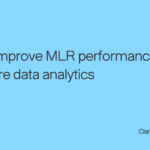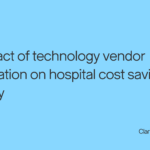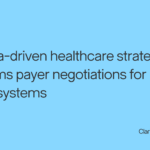To be successful in value-based payment models, health systems must support clinicians in their journey toward value-based care. Placing clinicians at financial risk for controlling health costs and improving quality without equipping them with the tools to do so leads to frustration and disillusionment. Infrastructure changes and incentives are needed to design payment systems that drive high-quality, cost-conscious care. This blog discusses how to redesign provider incentives to create a stronger cause and effect between incentive and performance by applying behavioral economics to better engage clinicians and promote improvement. By leveraging behavioral economics to offer personalized ‘carrots’ instead of ‘sticks,’ it becomes possible to reframe the payer-provider relationship and displace inefficient and ineffective quality and utilization management programs. Behavioral economics suggests that the structure and delivery of incentives—both financial and non-financial—can shape behavior. While these principles of inertia, or status quo bias, choice overload, immediacy, loss aversion, relative social ranking, etc., have been applied to motivate personal health decisions, retirement planning, and savings behavior, they have been largely ignored in the design of clinician incentive programs. However, there are several case examples published in the literature where these principles have been applied to clinician incentives and proven to be effective at improving clinician alignment with performance goals. Baptist Health System (BHS), a clinically integrated network of five hospitals in San Antonio, Texas, entered the Medicare Acute Care Episodes (ACE) program in 2009 and implemented behavioral economics to incentivize clinician performance. By using incentives, including unblinded performance reviews, renegotiated vendor agreements, new standardized clinical pathways, and dynamic gainsharing mechanisms, BHS managed to save an average of $284 per joint replacement and a total of $6.1 million on orthopedic MS-DRGs.[1] In a separate, controlled study, 80 percent of primary care physicians receiving micro-incentives referred patients to higher-value specialists they had never used before — representing a significant reduction in the total cost of care. In the same study, orthopedic surgeons who received micro-incentives referred patients to high-value sites of care 15% more often than those in the matched control group.[2] Here are a few tips for how to best apply behavioral economics principles in developing clinician incentives for high-value care: 1. Use relative social ranking to reduce variation in the use of unnecessary or costly services. For example, organizations might disclose to physicians their peers’ use of costly interventions, such as positron emission tomography – computed tomography for patients with breast cancer. Physicians dislike being outliers and adjust their practice patterns to conform when provided with a relative social ranking. This strategy is relatively inexpensive to implement. 2. Combine principles of mental accounting, loss aversion, and relative social ranking to provide financial rewards separately from regular paychecks with performance recognized in a peer forum. Invoking mental accounting and loss aversion, health systems can distribute paper checks for rewards, including a report on unearned dollars and what performance would have been needed to receive the additional incentive. 3. Be timely to enhance the impact of financial incentive payments by delivering them at times when the money is particularly salient (i.e., during the winter holiday shopping season). 4. Overcome inertia and the limits of willpower by adding additional checks for key behavioral changes, making high-value care the default. Systematic evaluation of incentives will enable healthcare delivery systems and payers to adopt the programs most likely to motivate high-value care. Combinations of infrastructure changes, non-financial incentives, and financial incentives have been tested across different settings to study their impact on clinician decision-making, care quality, and care cost. There is evidence that both financial and non-financial incentives improve quality and change behavior. In fact, new research demonstrates how peer comparisons and non-financial incentives work best among those with discordant perceptions (i.e., those that think they are top performers but are not). As previously described, Baptist Health System (BHS) implemented behavioral economics to incentivize clinician performance. By using financial and non-financial incentives, BHS managed to save an average of $284 per joint replacement and a total of $6.1 million on orthopedic MS-DRGs.[1] Additionally, Hawaii Medical Service Association (HMSA), the Blue Cross Blue Shield of Hawaii, introduced population-based payments for primary care (3PC). In a study that included 299,458 HMSA members, the 3PC system group was associated with a significant reduction in the mean number of primary care visits compared to the non- 3PC group.[4] Non-financial rewards have also been studied and shown to change clinician behavior. At Sutter Health, the effect of feedback interventions for clinicians in reducing opioid prescribing was evaluated in a four-arm factorial pragmatic cluster randomized trial at forty-eight emergency department (ED) and urgent care (UC) settings. There was a significant decrease in pills per prescription both for peer comparison feedback and for the combination of peer comparison and individual audit feedback. As one of the largest trials ever conducted testing the impact of nudges on opioid prescribing, this study demonstrated the potential for health systems to change clinicians’ behavior and improve patient safety by using scalable nudge interventions.[5] While peer comparison feedback can be effective in nudging clinicians to decrease opioid prescribing, it is unknown if peer comparisons are more effective among certain groups of clinicians. Clinicians with inaccurate self-perceptions about their prescribing habits may respond more strongly to peer comparison feedback than others. Preliminary findings show that among clinicians receiving peer comparison feedback, discordant prescribers (i.e., those that think they are top performers but are not) exhibited a differentially greater decrease of 1.7 pills per prescription than non-discordant clinicians. The combination of recent advances in health information technology, analytics, digital technology, and quality measurement enables more personalized feedback and incentives tailored to individual clinicians, greatly improving the effectiveness of new payment models in achieving organizational objectives and value-based care. Findings have shown that supplementing delayed returns (i.e., annual shared savings payments) with more immediate rewards can help promote engagement in alternative payment models. Additionally, aligning performance metrics and financial rewards with a core set of performance drivers and clinical delivery competencies spurs behavior change and promotes attention to issues that matter most. For small independent practices, the prospect of financial rewards alone is not enough to motivate engagement. Efforts must also focus on making practices change as frictionless as possible through technical solutions, coaching, and guided clinical process redesign. Sharing non-blinded performance data within (but not between) different accountable care organization (ACOs) seems uniquely effective. This delicate balance taps into physician’s natural competitive tendencies, but bounds these tendencies in shared goals and joint commitment. Keith Florance, GM & SVP, Payer at Clarify Health and Amol Navathe, MD, PhD, Associate Professor, Health Policy and Medicine, University of Pennsylvania, Co-Director, Healthcare Transformation Institute and Associate Director, Center for Health Incentives and Behavioral Economics, University of Pennsylvania will be co-leading a session at HIMSS on how health systems and health plans can transform physician incentives to be more effective in physician engagement and practice change. The presentation will pull from both business and scientific literature on behavioral economics and discuss the results of real-world applications of behavioral economics to the physician incentive model. You can learn more about Clarify’s speaking sessions at HIMSS23 at https://clarifyhealth.com/himss2023/. [1] Liao JM, et al. Baptist Health System: Succeeding in bundled payments through behavioral principles. Healthcare (2016), http://dx.doi.org/10.1016/j.hjdsi.2016.04.008i Fundamental behavioral economics principles and how to apply them to clinician incentive models
Both financial and non-financial incentives can influence clinician behavior
To craft successful provider incentive models, one size does not fit all
Citations
[2] Parikh, R. B., et. al. (2023), A Site-of-Service Intervention to Change Physician Behavior and Generate Net Savings. [Manuscript in Preparation].
[3] Emanuel, Ezekiel, et al., Using Behavioral Economics to Design Physician Incentives That Deliver High-Value Care. Annals of Internal Medicine: Medicine and Public Issues (2016), https://doi.org/10.7326/M15-1330
[4] Navathe, A. S., et. al., Association Between the Implementation of a Population-Based Primary Care Payment System and Achievement on Quality Measures in Hawaii. JAMA. 2019;322(1):57-68. doi:10.1001/jama.2019.8113
[5] Navathe, A. S., et. al., The Effect Of Clinician Feedback Interventions On Opioid Prescribing. HEALTH AFFAIRS 41, NO. 3 (2022): 424– 433. doi: 10.1377/hlthaff.2021.01407
- Author Details





